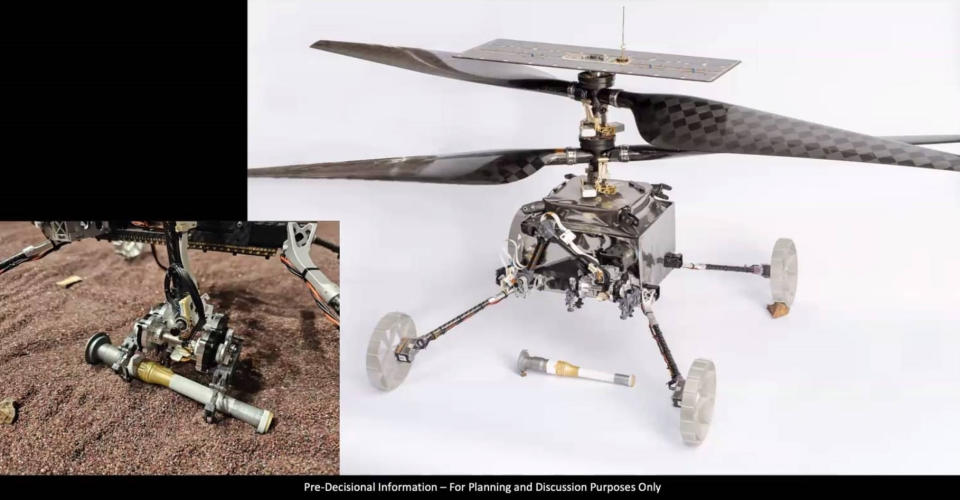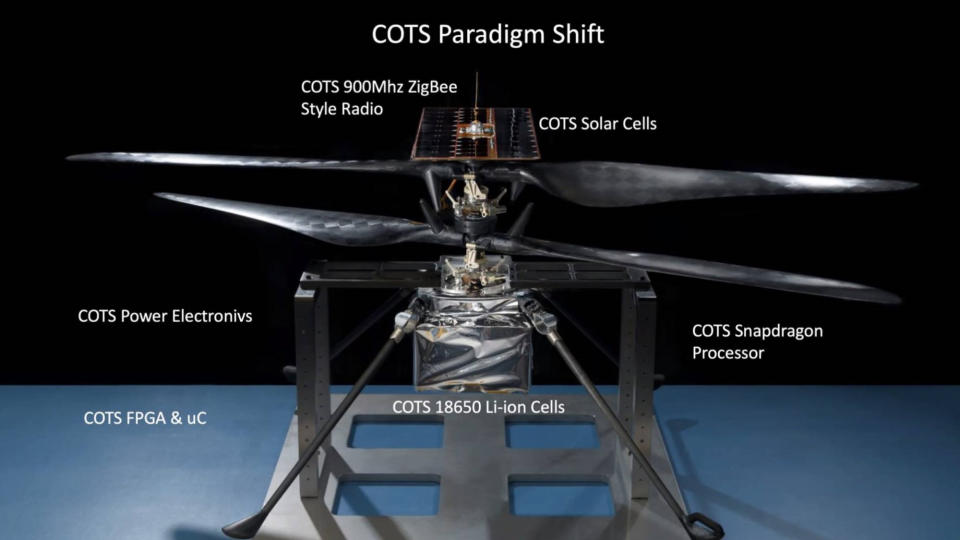How NASA's Ingenuity helicopter opened the Mars skies to exploration

NASA's Ingenuity Mars helicopter notched many milestones during its 72 Red Planet flights.
As a technology demonstrator, Ingenuity was tasked with making up to five flights over the course of 30 Earth days. But from its celebrated April 19, 2021 first voyage to its last airborne journey on Jan. 18, 2024, Ingenuity continued to push its self-made envelope in altitude attained, distance flown and speed reached over those nearly three years.
Ingenuity's flying days are over — it hit the Mars dirt hard on its final flight, damaging its rotor blades — but its influence will be felt far into the future. The 4-pound (1.8 kilograms) rotorcraft's achievements have opened the door for follow-on aerial craft to fly the friendly but thin atmospheric skies of the Red Planet.
Related: Facts about NASA's Ingenuity Mars helicopter

Final resting place
Ingenuity's stellar performance makes for a foundation to fabricate the next generation of aircraft to reconnoiter the Red Planet, said Teddy Tzanetos, the project manager for Ingenuity at NASA's Jet Propulsion Laboratory (JPL) in Southern California.
Tzanetos spoke to the Mars Exploration Program Analysis Group late last month, detailing a host of feats by the little copter, whose off-Earth exploits far exceeded expectations.
The final resting place for Ingenuity is called "Valinor Hills," a name taken from "The Lord of the Rings" trilogy that stands for "undying land," Tzanetos said.
"It's fitting because, although we're at the end of Ingenuity's mission, she is still alive. Aside from our rotor system, the aircraft itself is actually pretty green [for go] across the board. The vehicle is still ready to roll," able to move its blades slightly and control some of its actuators, said Tzanetos.
Not a crash
Tzanetos said the mini-copter made a hard landing on its final flight but did not crash. "We are still on all fours," he added — that is, resting on its full set of landing legs. However, imagery taken by Ingenuity indicates the loss of about one-third of each of the three carbon-fiber rotor blades still attached, while the fourth blade appears to be gone entirely.
This far-flung, detached rotor blade is believed to be about 165 feet (50 meters) to the west of the craft's final touchdown location. "That rotor blade looks like it broke off around the root," said Tzanetos.
Even though it's now stationary, Ingenuity continues to collect data on the Martian surface. And the little chopper has about 20 years' worth of onboard storage capacity. "Hopefully, one day either future astronauts or another rover, another set of aircraft, can go and downlink that data," Tzanetos said. (Ingenuity can't communicate directly with Earth; it relied on the Perseverance rover to relay messages, and Perseverance cannot just stay by the helicopter's side forever.)

What went wrong?
On its final three flights, Ingenuity experienced difficulties with "feature tracking" — keeping an eye on the terrain it was overflying proved challenging due to the blandness of the landscape.
The hard landing on the final flight isn't terribly surprising, given the resolution of Ingenuity's camera, the featureless terrain and how high over Mars the aerial vehicle was traveling. "This really was the very upper limit of what this hardware could accomplish," Tzanetos said.
"This is what she was built for," he added, "to find that edge and try and push further so that the next generation [of vehicles] can build off that. So it's been an incredible success."
The Ingenuity team completed their final shift working with the grounded Mars chopper on April 16, 2024. The group gathered to evaluate a transmission from the helicopter, confirming the operation of a software patch to the craft.
That added bit of software allows Ingenuity to serve as a stationary testbed and collect data perhaps useful for future expeditions to Mars.

Loitering looks
Tzanetos spotlighted developmental work on a much larger, more capable aircraft that could fly on future Mars science missions — a hexacopter. This aircraft is about the size of two Perseverance rovers parked side-by-side, he said, and would be capable of toting payloads anywhere on Mars, be it to the poles, equatorial sites or other desired exploration zones.
"Aircraft are going to be amazing at Mars," said Tzanetos. "The biggest problem is just landing." That's solvable, he said, by pre-identifying landing strips or building landing gear to handle rocks, pebbles, boulders or unexpected changes in soil properties without nose-diving into the Mars dirt if you stub a toe on a rock.
"There will be fixed-wing aircraft at Mars, I'm sure of it. There will also be rotorcraft at Mars," Tzanetos added. Such vehicles will be capable of flying long distances and offer loiter abilities over select spots — say, the vast canyon system of Valles Marineris.
Now being scoped out is a hexacopter design called "Chopper" that will be capable of flying just above the Martian surface and reaching a sky-high elevation of hundreds of meters.
Work is also underway on a proposed sample recovery helicopter, heavily based on Ingenuity's design and foreseen as a proposed way to pick up the sample tubes now being gathered and cached by Perseverance.
NASA's Mars Sample Return project, however, is currently being programmatically overhauled, with technical details of how to pull off the quest in limbo.
Related: NASA's Mars Sample Return in jeopardy after US Senate questions budget

RELATED STORIES:
— NASA's Ingenuity Mars helicopter sets new distance record on the Red Planet
Mars exploration with off-the-shelf tech
The Ingenuity team used a lot of commercial, off-the-shelf (COTS) hardware, such as the craft's radio, tiny sensors adapted from cell phone technology, solar cells, and devices carried by lightweight drones.
The mission team took certain risks, given the helicopter's relatively low budget ($80 million) and short development time.
"It boils down to how do you manage risk, what's an acceptable level of risk and who decides what's acceptable," advised Tzanetos. "That's not to say we didn't test."
The helicopter team became the longest running tenant of JPL's large space simulator to ready Ingenuity for Mars, subjecting it to simulated interplanetary conditions of ultra-cold temperatures, high vacuum and brutal solar radiation.
"Had the baby only survived three days, I would have been in the lucky camp. But three years on Mars, being bathed in the radiation environment, I think that's the final nail in the coffin for any doubters that COTS can operate at Mars," Tzanetos pointed out.
"COTS is here to stay," said Tzanetos. "It will only become more common at Mars and throughout the solar system."
